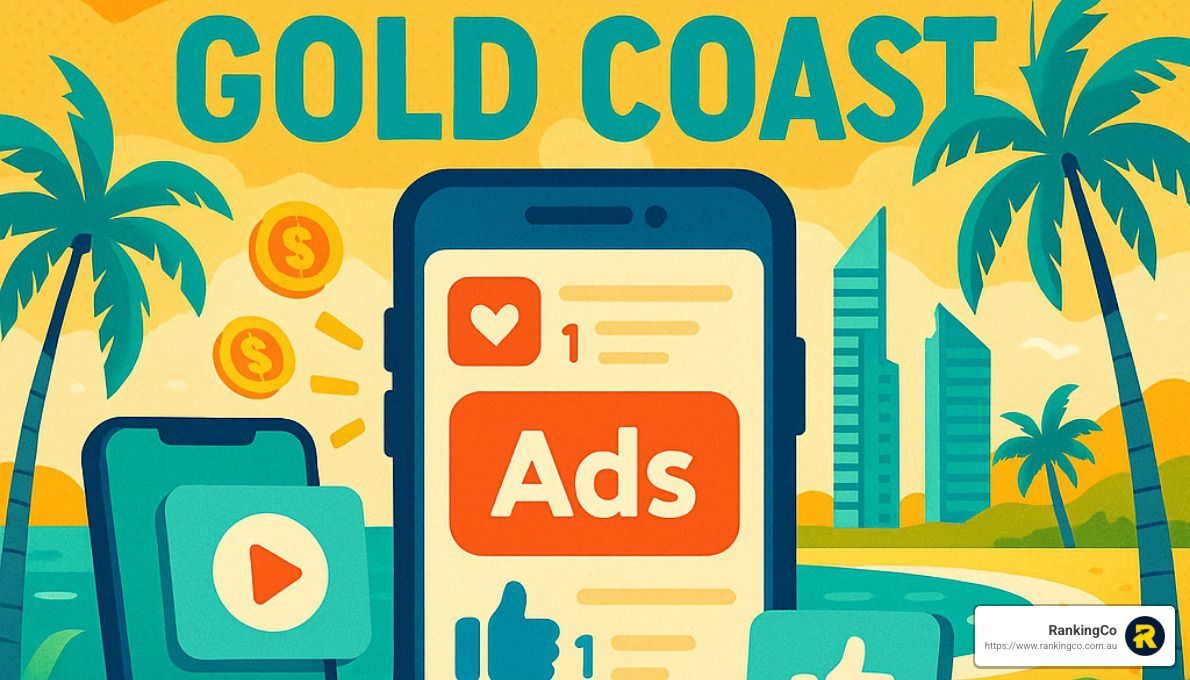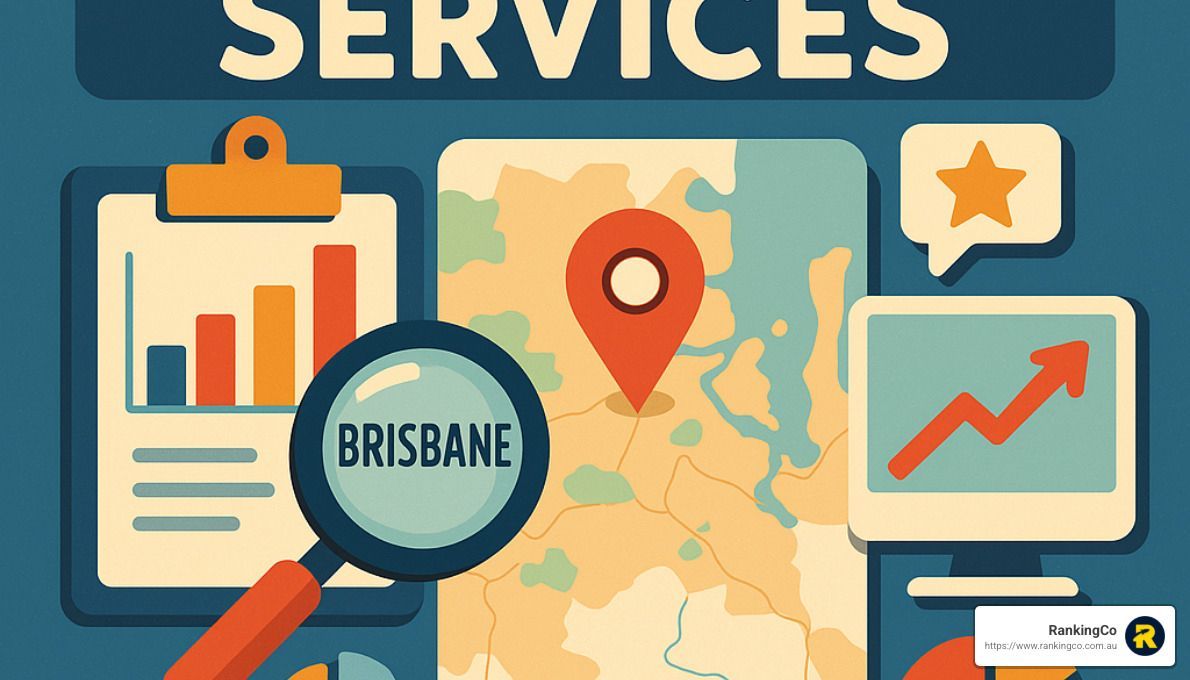How to Understand Brand Voice on a Budget
Brand voice is the unique personality and style your business adopts when communicating with customers. It's consistent across all your channels and expresses who you really are as a company.
Quick explanation of brand voice:
- It's the distinctive personality your brand presents to the world—think of it as your business's character.
- It covers how you communicate in writing, visuals, and customer interactions.
- It makes your brand recognisable, helps you stand out from competitors, and builds trust with customers.
- Unlike brand tone, which adapts according to context or situation, your brand voice stays fairly consistent.
When your budget is tight, understanding and mastering your brand voice becomes even more crucial. Your brand personality doesn't depend on flashy advertising; it thrives on authenticity and consistency.
I'm Amber Porter, CEO of RankingCo. With years of experience in digital marketing and helping businesses define a compelling brand voice, I'm here to share practical strategies to align your brand voice with your audience and goals.

What is Brand Voice and Why Does It Matter?
Brand voice is the unique personality your brand presents to the world—shaping how you communicate in every interaction, from your social media posts and website content to customer service emails. It’s the distinctive style and character that makes your brand instantly recognisable and memorable.
Think of your brand as a guest at a party. Would they be bold and outgoing, sharing entertaining stories and cracking jokes? Or maybe calm and thoughtful, listening carefully and offering insightful remarks? This is your brand personality in action, guiding your entire communication strategy and setting you apart from competitors.
In today's crowded digital marketing landscape, you need more than just great products or services—you need a consistent voice that customers immediately identify and relate to. After all, if your logo didn't appear alongside your content, would your audience still recognise it as yours? Achieving this kind of instant recognition is the power of a clearly defined brand voice.
Research suggests that up to 77% of digital marketers consider a strong brand voice key to being noticed in today's content-saturated world. But brand voice isn’t just about standing out. It’s also about forming genuine connections, building trust, and establishing a competitive advantage. A carefully crafted brand voice communicates authenticity and consistency, two qualities customers now value more than ever.
At RankingCo, we’ve witnessed first-hand how defining a clear brand voice not only boosts brand recognition but also transforms customer relationships. Through our dedicated Content Marketing SEO services, we don't just help small businesses rank higher—we help them develop an authentic, engaging voice that deeply resonates with their target audience.
The Difference Between Brand Voice and Brand Tone
People often mix up brand voice and brand tone, but understanding their differences is essential when building a brand tone of voice. Think of your voice as your brand’s personality—it stays consistent no matter the situation, much like your own personality stays the same whether you’re at the office or at home with family. Your tone, however, adapts to match specific situations and contexts.
Imagine chatting at a business meeting versus catching up with your best mate—your personality remains the same, but your tone changes. Likewise, your brand voice is the constant reflection of who your brand is, while your tone shifts depending on who you’re communicating with and the emotional context of your message.
"Our voice expresses who we are as a company. Our tone varies depending on the audience and their goals."
This brilliant quote illustrates perfectly how voice and tone interact. For example, a brand with a friendly and approachable personality might use a joyful, enthusiastic tone when celebrating a customer's milestone, but switch to a compassionate, empathetic tone when addressing a complaint.
Creating clear voice and tone guidelines makes sure your team understands these distinctions. It helps maintain consistency, even when multiple content creators or external freelancers are involved.
Why a Strong Brand Voice is Essential for Small Businesses
For small businesses working within tighter budgets, developing a distinctive brand voice is not just a luxury—it’s a cost-effective marketing necessity. Your voice allows you to shine brighter than your bigger competitors without the huge ad spend.
A clear and well-defined brand personality makes your messaging more memorable, building an emotional connection that translates into customer loyalty. Customers who feel genuinely connected to your brand become passionate advocates, enthusiastically recommending your business to family and friends.
Furthermore, authenticity has become a vital factor in consumer decisions. In fact, 86% of consumers say authenticity plays a crucial role when deciding which brands they support. For small businesses, where personal relationships often drive customer decisions, a strong, authentic voice can significantly impact audience engagement and growth.
A consistent, genuine brand voice also boosts your brand recognition—customers become familiar with your style, vocabulary, and communication patterns, instantly recognising your business even without logos or images. This reinforces trust and credibility, key to long-term relationships and sustainable growth.
At RankingCo, we leverage custom strategies like Brand Awareness Through Social Media to help small businesses maximise their impact without hefty expenditure. By defining your brand voice clearly, authentically, and consistently, you'll build deeper connections that surpass any marketing budget.
How to Define Your Brand Voice on a Budget
Creating a compelling brand voice doesn't mean you need to hire expensive consultants or join lengthy, costly workshops. With a clear, structured approach and some dedicated effort, you can develop a memorable voice infused with your brand personality, even on a tight budget.

The secret sauce here is being intentional and systematic. So, let’s break down how you can clearly define your brand tone of voice without overspending or feeling overwhelmed.
Start with Your Company's Mission and Values
Your business’s mission and core values form the heart of your brand personality. Think of your voice as a reflection of these foundational elements—your values, your passion, and what makes you unique.
Begin by revisiting your mission statement and core values. Reflect on the reason your business exists, the impact you aim to make, and the principles you hold dear. Questions like these can help guide your thinking:
- Why did you start your business in the first place?
- What values drive your everyday decisions?
- How does your approach differ from your competitors'?
- What do you want your customers to instantly associate with your brand?
For instance, if innovation is core to your company’s mission, your voice might be dynamic and forward-thinking. If transparency and openness define your brand, you might opt for a conversational, jargon-free style.
"A brand voice, though, isn't a non-human voice. It's a consistent voice that enables your brand to be an easily identified and authoritative source in your area of expertise."
This quote reminds us that even though you're crafting an identifiable voice, it should still feel human, natural, and authentic. After all, people trust people, not faceless corporations.
Research Your Target Audience Without Breaking the Bank
Understanding your audience is absolutely essential for building a brand tone that resonates deeply, but you don't need a big budget to do it effectively. Thankfully, plenty of cost-friendly methods can help you tune into your audience’s personalities, preferences, and pain points.
Social media listening is one powerful, budget-friendly option. Simply spend time observing online conversations about your brand, competitors, or industry. Notice the language your audience naturally uses—their style, words, and emotional tone. This will help you craft your brand voice to meet them where they are emotionally and conversationally.
Another accessible method is customer surveys. Using free tools like Google Forms, you can quickly gather direct feedback and valuable insights about your customers' needs, expectations, and perceptions of your brand.
Don’t forget about review analysis. Reading through customer reviews reveals your audience's values and what they genuinely appreciate (or don't!) about your brand. This feedback is gold when defining your brand voice.
Online communities are another great way to tap into your audience without spending. Participating in relevant forums, Facebook groups or Reddit threads provides invaluable insight into your customers’ authentic communication style and concerns.
Lastly, competitor research can help you differentiate clearly. Understanding how others communicate gives you a chance to spot gaps and develop a distinctive voice that stands out.
Analyse Your Competitors' Brand Voices
Understanding your competitors’ voices isn’t about mimicking them—it’s about finding opportunities to set yourself apart. A well-executed competitor analysis is a simple, cost-effective way to find your unique place in the market.
Identify three to five key competitors and visit their websites, social media pages, email campaigns, and ads. Pay attention to their brand personality as it shines through their communication. Are they formal or conversational? Serious or humorous? Technical or approachable?
Look for patterns in how they present themselves across channels. Perhaps you'll notice they all take a very formal, technical approach. This may be your golden opportunity to adopt a warmer, more conversational style—giving your audience a refreshing alternative. Or maybe competitors seem overly casual, creating space for your brand to stand out by adopting a polished, authoritative voice.
Use these insights to determine how your voice can uniquely position your brand in your audience’s minds and hearts.
At RankingCo, our SEO Content Writing services are specifically designed to help your business differentiate itself through highly targeted, audience-focused content—without breaking the bank.
Creating Your Brand Voice Chart: A Step-by-Step Guide
Now that you've explored your mission, values, audience insights, and competitor analysis, it's time to bring everything together. Creating a brand voice chart is the best way to formalise your unique personality and tone of voice in marketing—and the great news is, you won't need pricey design tools or special skills to get started. A simple, clearly organised document is all it takes.
To give you a head start, you can use Semrush's handy free brand voice template. So, let's dive in and create something practical and powerful to guide your brand tone of voice.
Define 3-5 Core Brand Voice Characteristics
Begin by identifying three to five descriptive characteristics that define your brand personality. Think of these like the key traits you'd use to describe a good mate—someone your customers can instantly relate to.
For example, your brand might be warm and friendly (like a supportive neighbour), knowledgeable and trusted (like an experienced mentor), or playful and witty (like that fun friend who always brightens your day). Choose characteristics that genuinely reflect your company's values, resonate with your audience, and help you stand apart from the competition.
To help visualise this, here's an example of how your voice characteristics could look in practice:
Voice Characteristic
Description
Do
Don't
Friendly
Warm, approachable, conversational
Use words like 'we', 'you', keep it simple and natural
Avoid stiff, corporate jargon or overly formal phrases
Knowledgeable
Confident, insightful, helpful
Support content with clear examples and trustworthy data
Don't overwhelm with complicated explanations or technical buzzwords
Playful
Humorous, engaging, relatable
Add appropriate humour, casual language and relatable anecdotes
Avoid jokes that could be misunderstood or casual slang that alienates readers
The key here is to be specific and authentic. The more clearly you define your brand personality, the easier it becomes for your audience to recognise and connect with you—no matter where they see you online.
Create Do's and Don'ts for Each Characteristic
To make your brand voice actionable, create clear guidelines for each characteristic you've defined. These are simple "Do's" and "Don'ts" that guide anyone who's crafting content for your business, ensuring your tone remains consistent across all channels.
Let's say one of your core voice traits is being "warm and approachable". Your guidelines might look like this:
Do
- Write like you're chatting with a friend, using everyday language and contractions ("we're", "you've", "it's").
- Address readers directly, using words like "you" and "your" to create immediate connection.
- Add relatable examples or short, friendly stories to illustrate your points.
Don't
- Sound overly formal or distant, like "the customer may find..." (instead, say "you might find...").
- Use complicated jargon that could confuse or intimidate your audience.
- Be so informal that you come across as unprofessional or careless.
By clearly laying out these guidelines, you're making it effortless for your team (or anyone else involved in creating content) to get your brand tone of voice just right every time.
Develop a Simple Style Guide for Consistent Implementation
While your brand voice chart focuses on personality and tone, your style guide is all about the finer details of writing. A simple style guide, even just one page, helps everyone create consistently polished content—no matter who's writing it.
A straightforward, budget-friendly style guide might cover elements such as:
- Grammar and punctuation preferences: Do you prefer the Oxford comma or not? Do you capitalise every word in headings, or just the first?
- Word choice and vocabulary: Clearly define the preferred terms for your products or services. For instance, do you say "clients", "customers", or "partners"?
- Formatting standards: How should bullet points, headings, and quotes be presented to ensure consistency across all channels?
- Brand-specific language: Include words or phrases you'd rather avoid, and clearly state how you refer to your company name throughout your content.
- Examples: Share short before-and-after snippets showing your brand voice in action, helping to illustrate exactly how your tone and style guidelines look in the real world.
Your brand tone of voice isn't just about creating fancy guides—it's about building a whole personality that customers can truly connect with.
A clear, practical brand voice chart and style guide set you up for success, making your business instantly recognisable, authentic and trusted across every marketing platform.
Implementing Your Brand Voice Across Channels on a Budget
Now that you've carefully crafted your brand voice, the next challenge is putting it into action—especially when resources are tight. But here's the good news: consistency doesn't require a massive budget. It simply requires clarity, strategy, and just a little creativity.
Effective implementation doesn't mean being identical across every channel. Instead, it's about maintaining your core brand personality while adapting your tone of voice in marketing to suit each platform's unique quirks and audience expectations. At RankingCo, we specialise in helping businesses manage this balancing act and we've seen first-hand how a thoughtful approach can deliver big results even with limited budgets.
Social Media: The Perfect Testing Ground for Brand Voice
Social media platforms are your secret weapon for building a brand tone on a budget. Think of social media as your friendly neighbourhood café—it's informal, conversational, and a fantastic place to experiment with your voice without high stakes.
Start simple: rewrite your bio to reflect your newly defined brand personality clearly and succinctly. Then, create content that genuinely embodies your voice for at least one full week. Pay attention to how your audience reacts—likes, comments, shares—and listen closely to their feedback. You'll quickly see what's resonating and what's falling flat.
Why prioritise social media? Because it's the easiest way to test ideas and immediately see results. Plus, memorable content is king: 40% of customers say distinctive, memorable content helps brands truly stand out on social media. In other words, consistency and character speak volumes, even louder than expensive campaigns.
If you're unsure where to start, our Social Media Marketing Services can guide you through this process, ensuring your brand tone of voice hits all the right notes.
Website and Blog Content: Establishing Your Voice
Your website is often the first deep interaction customers have with your brand personality. It's your brand’s digital home, so make sure visitors quickly understand who you are. Take some time to review key areas of your site, and ensure your brand voice comes through loud and clear:
Your homepage should immediately reflect your brand personality. Think of it as your front door—welcoming visitors with your distinct voice, clearly communicating what you offer.
Your About Us page is your chance to share your story authentically, showcasing who you are as a team and what makes your business unique.
Update your product or service descriptions to align with your voice. If your brand is playful, keep descriptions light-hearted and engaging. If you're authoritative, ensure you're clearly demonstrating expertise without jargon.
Regular blog posts are a golden opportunity to consistently showcase your voice. They position your brand as an authority in your niche while building trust and loyalty with your visitors.
Quality matters more than quantity. It's better to carefully rewrite a few key pages thoroughly rather than skim over your entire site. Our Onsite SEO experts make sure that your voice-optimised content doesn't just sound good, it ranks highly on search engines, too.
Customer Communications: Making Every Interaction Count
Every customer interaction, no matter how small, is a powerful opportunity to strengthen your brand tone of voice and reinforce your relationship. Emails, chat conversations, and even transactional messages like order confirmations can all reflect your voice, helping you build a consistent, authentic customer experience.
Take some time to revise your email templates, making sure they reflect your personality clearly—from welcome emails and newsletters through to follow-ups and feedback requests.
Similarly, your customer service scripts should sound natural, warm, and consistent. Train your team to embody your voice, whether they're speaking on the phone or messaging through live chat.
Don't forget to create thoughtful feedback responses. Develop templates for handling both positive reviews and challenging interactions, ensuring audience trust through authenticity and empathy.
Even smaller messages like transactional notifications—think order confirmations, subscription renewals, or shipping notices—can subtly reinforce your brand identity. Customers remember these details, especially when they're executed with care.
Here's a simple test: imagine if your logo disappeared from your communications. Would your customers still recognise it's you, just from your distinct brand voice? If your answer isn't a confident "yes," there's room to improve. The good news? It costs virtually nothing to make these small, impactful changes.
At RankingCo, we believe every interaction is a chance to build deeper connections and earn lasting loyalty. By thoughtfully implementing your voice across channels, you'll stand out from competitors and set your brand apart—even without a big-budget marketing campaign.
Measuring and Refining Your Brand Voice
Developing your brand voice isn't something you do once and then forget about—it’s like tending a garden. It needs ongoing care, regular check-ins, and a bit of thoughtful pruning now and then. Fortunately, you don't need expensive tools or fancy consultants to measure your success. In fact, there are plenty of budget-friendly ways to ensure your brand personality stays fresh, relevant and engaging for your customers.
When you're building a brand tone on a budget, it’s essential to get smart with the data and resources you have. Even simple analytics can provide powerful insights into how your brand tone of voice connects with your audience.
Budget-Friendly Tools to Measure Brand Voice Effectiveness
You don’t have to break the bank to measure how well your brand voice resonates. Start by using the free social media insights available on platforms like Facebook, Instagram or LinkedIn. These metrics give you a clear picture of which posts connect most effectively with your audience and help you understand the types of content that truly represent your brand personality.
Similarly, website tools like Google Analytics offer valuable insights into how visitors interact with your content. You can easily pinpoint which pages are highly engaging—and which aren’t quite hitting the mark. This can guide you towards content that genuinely reflects your brand’s unique voice and builds stronger customer connections. Check out our Modern Strategies for Web Traffic Generation to learn how to interpret analytics effectively and boost your site's performance.
Your email marketing platform is another goldmine of data. By evaluating your open rates and click-through rates, you'll quickly find if your audience is responding positively to your tone of voice in marketing or if adjustments are needed.
Don’t underestimate the power of simply asking your customers for feedback. Short surveys and polls can reveal valuable perceptions of your brand and help you understand how authentic and relatable your current voice feels to your audience.
Finally, conducting regular content audits is essential. Spot-check your website, social media, blogs, and emails periodically to ensure that your brand voice stays consistent across all platforms. Keep an eye out for any content that strays too far from your defined voice characteristics, and gently steer it back on track.
When and How to Evolve Your Brand Voice
While keeping your brand personality consistent is crucial, it's also important to remember that brands, just like people, evolve over time. Markets shift, new competitors emerge, and your audience’s tastes and expectations change. Your voice needs to evolve accordingly—slowly and intentionally—to remain relevant and authentic.
If your business expands into new markets, or you're launching new products or services, your brand voice might need tweaking to resonate with a broader audience. Any noticeable shifts in your target demographic—such as younger customers becoming central to your success—can also call for adjustments in how your brand speaks.
Market trends and industry changes can affect your voice, too. If customers start gravitating towards more informal, conversational content, your overly formal communication could become outdated. Keeping an eye on shifting trends helps your brand personality stay fresh and relatable.
Pay close attention to your content performance data. If you notice declining engagement across channels, it might mean your current brand voice is losing its connection with your customers. Listen carefully to feedback from your audience as well. If they tell you that your message feels off-brand or doesn't resonate, take it seriously.
When updating your voice, avoid sudden or dramatic changes. Abrupt shifts can confuse customers and dilute the recognition you've built. Instead, adopt gradual adjustments, gently refining your tone until it once again feels authentic, consistent and aligned to your core values.
At RankingCo, we've helped many businesses steer these subtle transitions. Our Digital Marketing Services in Brisbane team can offer friendly, experienced guidance to ensure your brand voice stays strong, connected and true to who you are—even as you evolve.
Frequently Asked Questions about Brand Voice
How is brand tone of voice different from brand personality?
It's easy to see why these terms can cause confusion. While closely linked, brand tone of voice and brand personality each have distinct roles in your brand strategy.
Think of your brand personality as your brand's core identity—it's the set of human characteristics that define who you are as a business. Are you playful and approachable? Professional and authoritative? Passionate and inspiring? This is the deeper essence that informs everything your brand says and does.
Now, your brand tone of voice is how you express that personality outwardly through words and communication. It’s the practical, adaptable side of your brand personality, changing slightly to suit the situation you're communicating in. For example, even a friendly and light-hearted brand might adopt a more serious, reassuring tone when handling customer concerns.
Think of it this way: your brand’s personality is like your own character—steady and long-term. Your brand tone, on the other hand, is how your character comes across in different scenarios. Just as you might speak differently at a dinner party versus a business meeting, your brand tone of voice shifts slightly depending on context.
It's crucial these two elements complement each other seamlessly. If your personality suggests you're serious and trustworthy, using too much slang or humour in your tone can create confusion and undermine credibility. On the flipside, a mismatched formal tone for a friendly, fun-loving brand could feel stiff and unnatural. Getting this alignment right is key to building trust and fostering strong connections with your customers.
How can I maintain a consistent brand voice with multiple content creators?
Maintaining consistency in your brand voice can often feel tricky, especially when multiple content creators are involved. But don't worry—there are some simple ways to keep everyone aligned and speaking your brand’s unique language.
Start by crafting a clear, easy-to-use style guide. This isn't just about grammar rules or punctuation—though that's part of it. Your style guide should clearly outline your core voice characteristics, practical dos and don'ts, and include plenty of real-life examples. Examples help enormously, showing your team exactly what your brand voice looks like in action.
Providing initial training or workshops can also go a long way. Brief your writers, social media team, customer support staff, and freelancers directly, and give them space to ask questions. This ensures everyone has a shared understanding from the beginning.
Another helpful strategy is to set up a straightforward review system. Initially, give new creators feedback on their content, gently steering them towards your desired voice. Over time, they'll become more confident and consistent—meaning you'll need less oversight.
Regular check-ins and occasional content audits can help identify any voice drift before it becomes a bigger issue. And don't underestimate the power of templates. Creating simple, voice-optimised templates for common content types like social posts, newsletters, or emails makes everyone's life easier.
At RankingCo, we understand the importance of voice consistency in digital marketing. Our Technical SEO and content teams work closely together, ensuring your content not only ranks well but also speaks authentically to your audience.
How often should I review and update my brand voice?
Your brand voice isn't set in stone—and nor should it be. Think of it as a living aspect of your brand that evolves gradually over time. While there's no strict rule on exactly how often to revisit your brand voice, there are a few key points to consider.
It's good practice to do a quick quarterly review. Just a brief check-in, looking at your recent content across your website, blog, social media, and customer communications, can quickly highlight if something feels inconsistent or outdated.
In addition, conducting a more comprehensive brand voice audit annually is wise. Take the time to ask yourself whether your voice still resonates with your audience, supports your current business goals, and aligns with market trends. This deeper dive allows you to make proactive, strategic adjustments.
Beyond these scheduled checks, certain events should prompt a review of your brand voice. Major business shifts—such as expanding into new markets, launching new products, or altering your target audience—often require voice updates. Customer feedback is also invaluable; if your audience starts describing your brand in unexpected ways or engagement drops noticeably, it's a sign your brand voice might need refining.
The important thing to remember is that evolving your voice doesn't mean completely reinventing it. Small, intentional adjustments usually work better than sudden, drastic changes. Consistency builds familiarity and trust, so any updates should feel natural and authentic.
At RankingCo, our eCommerce SEO specialists know exactly how to balance consistent brand communication with strategic optimisation, ensuring your online store speaks directly to your customers—and search engines too.
Take Your Brand to New Heights with a Google Premier Partner
Building a distinctive brand voice doesn't require a massive budget—just thoughtfulness, consistency, and a clear understanding of who you are as a business. Throughout this guide, we've explored how your brand's personality can shine through in every piece of content you create, from social media posts to customer service emails.
Your brand voice isn't just window dressing—it's the authentic expression of your business's personality. When customers can recognise your content without seeing your logo, you've created something truly valuable: instant recognition in a crowded marketplace.
At RankingCo, we see the power of a well-defined brand tone of voice every day. Small businesses that communicate with clarity and consistency build stronger connections with their audiences, often outperforming larger competitors with bigger marketing budgets. That's because customers crave authenticity—they want to feel like they're dealing with real people, not faceless corporations.
Our approach to digital marketing always begins with understanding your unique brand personality. As a Google Premier Partner, we bring technical expertise and creative insight to every project, ensuring that your distinctive voice comes through in all your online presence.
Whether you're just beginning to define your tone of voice in marketing or looking to refine an established brand voice, our team can help amplify what makes your business special. Our Leads SEO and Google Ads services are designed to complement your brand voice efforts, ensuring your personality shines through while driving measurable business results.
We understand the challenges Australian businesses face in today's competitive digital landscape. That's why our Digital Marketing Services in Brisbane and across Australia focus on creating authentic connections that drive real engagement—not just traffic.
The most successful brands don't just talk at their customers—they have conversations with them. They listen, respond, and evolve while staying true to their core values. Building a brand tone that resonates takes time, but the rewards are substantial: increased recognition, stronger customer loyalty, and a foundation for sustainable growth.
Let's chat about how we can help you define, refine, and amplify your unique personality across all your digital channels. When you partner with RankingCo, you're not just getting technical expertise—you're getting a team that understands the art and science of authentic brand communication.
Because in a world where everyone is shouting for attention, it's not about being the loudest—it's about being the most authentic, consistent, and memorable voice in the room.















